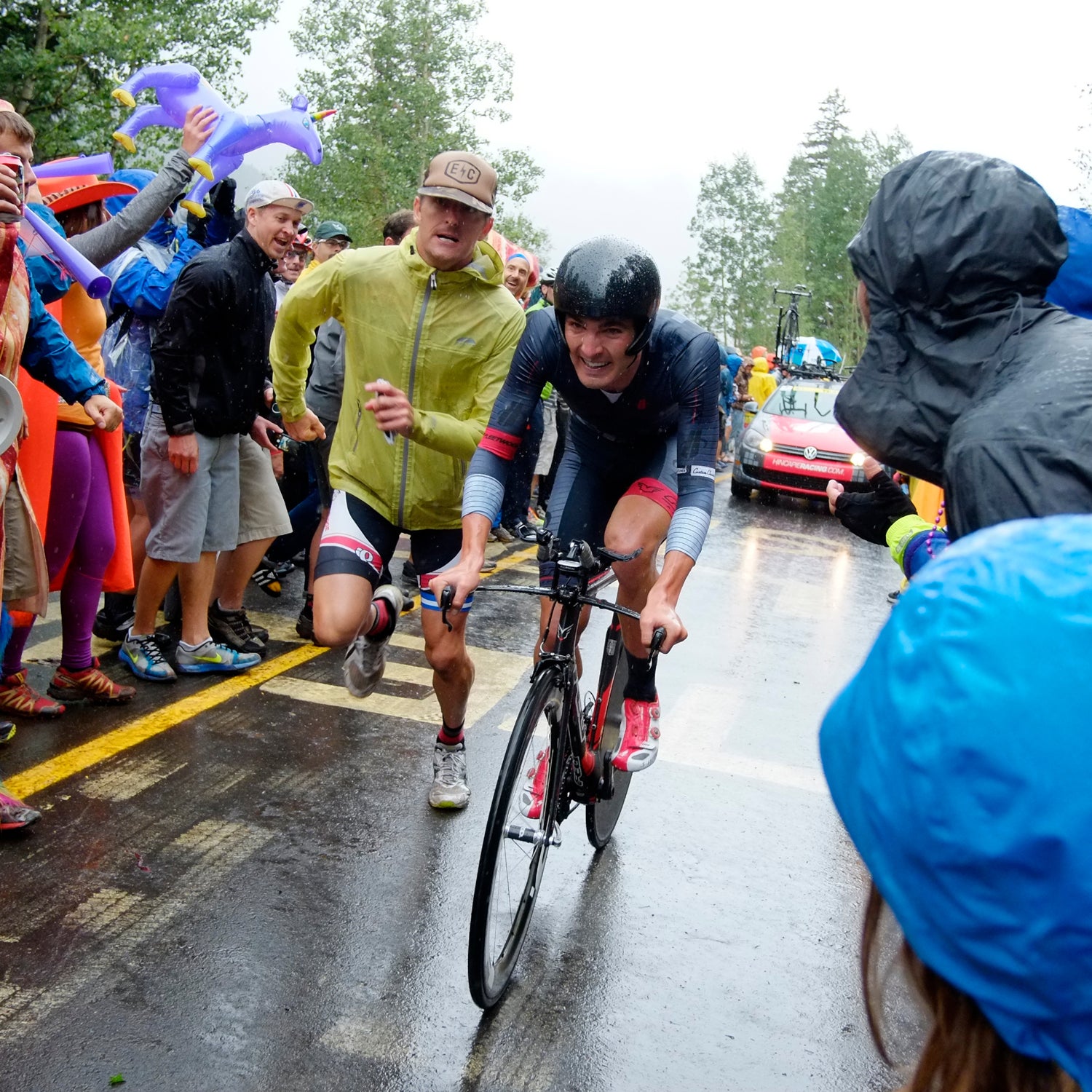As the peloton crested the 12,095-foot summit of Independence Pass near Aspen, Colorado, thousands of spectators crowded the highway, bells clanging and flags waving. Inside a race vehicle winding through the tunnel of fans, USA Pro Challenge CEO Shawn Hunter glimpsed the same enthusiasm he’d witnessed watching the Tour de France ascend the Alps earlier that summer of 2011. Overwhelmed, Hunter held back tears.
Since its auspicious debut four years ago, the weeklong USA Pro Challenge has become by some measures the biggest bike race in the country. This year’s fifth annual installment, which started Monday and ends Sunday, will attract more than one million spectators and 100-plus riders to a 605-mile course through the Colorado Rockies, with 40 hours of television coverage broadcasting the event worldwide.
The Pro Challenge is the closest thing to the Tour de France you’ll find on U.S. soil. But there’s one key difference: While its French counterpart rakes in millions each year in earnings, “America’s Race” has yet to turn a profit.
According to a , the Pro Challenge has lost more than $20 million since its inception. Race officials decline to comment on exact losses, though Hunter says the race is on track to possibly break even within two years.
“If you got a dollar for everybody who stood on the roadside, you’d have a fairly significant revenue source,” says David Chauner. “But you can’t charge admission. That’s one of the pluses and the minuses of the sport.”
The event is in good company among domestic stage races in its struggle to get out of the red. The other two top-tier internationally sanctioned U.S. races—the eight-day Amgen Tour of California and weeklong Larry H. Miller Tour of Utah—have faced financial difficulties of their own. The Utah tour, begun in 2004, was paused in 2007 due to a lack of funding. And for its first five years, the decade-old California race was losing between $1 million to $2 million per year.
So why do America’s most prestigious bike races have a habit of hemorrhaging cash? Multiday stage races are an expensive proposition, costing more than $10 million per year to host, by some estimates. Television production and distribution alone—requiring two fixed-wing aircraft, a helicopter and three motorcycles—costs the Pro Challenge up to $350,000 per day, Hunter says. And unlike traditional stadium sports, organizers can’t rely on ticket sales and concessions to recoup expenses.
“If you got a dollar for everybody who stood on the roadside, you’d have a fairly significant revenue source,” says longtime race organizer David Chauner. “But you can’t charge admission. That’s one of the pluses and the minuses of the sport.”
Races must therefore depend on other types of income to stay afloat. Successful European races operate largely from lucrative television contracts and corporate sponsorships, built upon a large, well-established fan base. All three premier U.S. races have tapped a more immediate funding source: A wealthy underwriter willing to endure steep loses on the arduous ascent toward profitability. “It takes visionaries who have a lot of money and a lot of patience to embrace these events,” says Jim Birrell, race director for the Pro Challenge and, until recently, the Tour of California.
“It takes visionaries who have a lot of money and a lot of patience to embrace these events,” says Jim Birrell
California’s race belongs to billionaire business magnate Philip Anschutz. Utah’s Miller family, whose holdings include 55 car dealerships and the NBA’s Utah Jazz, owns that state’s tour. And the Pro Challenge owes its existence to Quiznos co-founder and avid cyclist Rick Schaden. “There would absolutely not be a USA Pro Challenge or stage racing in Colorado without him,” Hunter says. “It takes amazing patience to support a race like this. There’s a reason why there’s not 20 of them.” Schaden that he understands the race might not turn a profit anytime soon, but that he's into the sponsorship for the “long haul.”
Some question the sustainability of the current financial model, and there is a precedent for popular-but-unprofitable stage races to go belly-up (see ). Though Chauner credits today’s races with developing creative revenue streams like VIP experiences and entry fees for amateur gran fondos before the events, he isn’t convinced that U.S. stage racing will ever achieve the success that the sport’s grande dame has enjoyed for more than a century.
“The problem with the stage races is they’re trying to model themselves after the Tour de France,” Chauner says. “We need to look at it and say, ‘How could we address the challenges of cycling and make it more appealing to an American audience?’”
But from Hunter’s perspective, the magic of the Tour is exactly what American cycling needs.
“The Tour de France is in a category by itself,” he says. “It’s the number-one race in the world, and hopefully always will be. Our goal is to be number two.”


